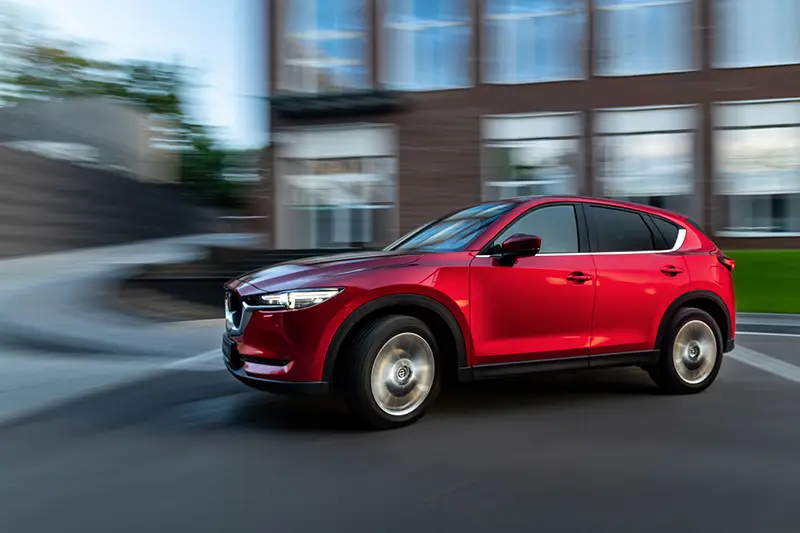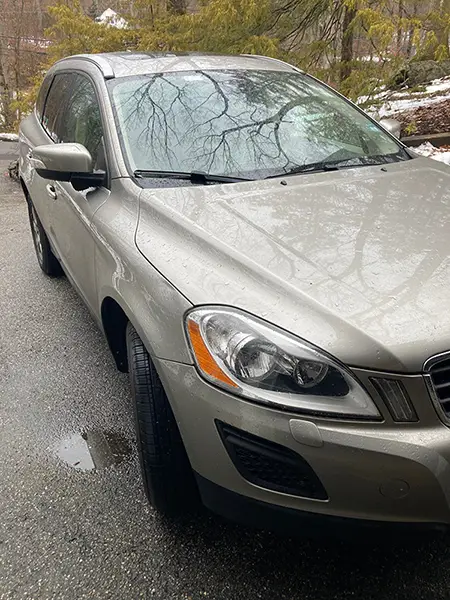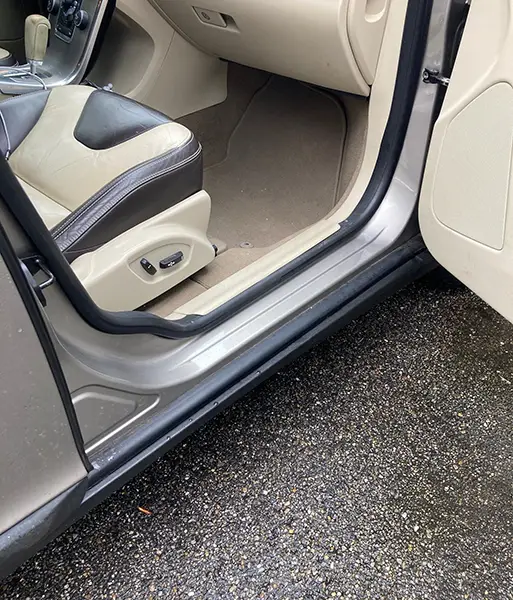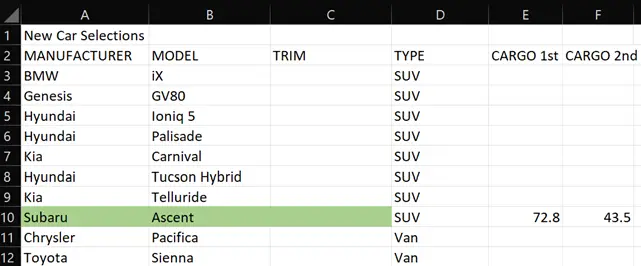Acquiring a new vehicle for the family is daunting task, even in the simplest of times. Mix in the complicating factor of a family member with a motor control disability, and several additional concerns must be addressed. If the family member's disability requires the transport of a power wheelchair that will remain occupied in transit, the options are narrowed down to an accessible van. This article will deal with the scenario where the family member is able to transfer from a wheelchair to the vehicle with or without assistance, and all of the complexities of that transportation issue.

Why acquire a new vehicle now?
Everyone's situation is different, so here is what is driving me (pardon the pun) to look for a new vehicle now. We currently have one car: a standard-size SUV that is 12 years old with 130,000 miles. The foremost issue requiring action now is that my 16-year-old daughter is about to get her driver's permit and we need to go back to being a two-car family. The longstanding issue is how well the vehicle accommodates my wife, who has a severe motor disability resulting from a stroke seven years ago. My wife can transfer to the passenger side front seat with assistance. Her "transport" wheelchair and all its various parts fit neatly in the back of the vehicle with the rear sets upright, but there isn't much space left for luggage, groceries, or our 85-pound dog. We often find ourselves running out of space when trying to do a road trip, especially if we can't stow the rear seats when we have four people in the car. When we want to take my wife's recumbent bike-chair out to park, it takes up the entire cargo area.

Our wish list
The first step in considering a new vehicle should be developing a wish list of desired characteristics. Here, we'll discuss traits relevant to the disability issue and ignore the usual things such as paint color, entertainment systems, etc. Must-have items are marked with an asterisk*.
- * All-wheel drive: Our driveway is severely sloped, so we need confident access to the house.
- Driver-accessible control of passenger seat position: for when my wife needs to change position.
- * Passenger front & side airbags: Safety is paramount given the lack of motor control.
- 7+ passenger seating: This is less about carrying seven passengers and more about cargo space.
- * Cargo space exceeds 100 cubic feet: Cargo space must be considered alongside height and width.
- * Cargo area height >30" and width >45": There needs to be clearance for the recumbent bike.
- * Passenger seat access: The height and adjustability of the passenger seat is important for access.
- Conveniences: This includes cupholders, space for food & tissues, etc.
- Headed/ventilated seats: Important for passenger (and driver) comfort.
- Fuel economy: We regularly do local trips for therapy and other activities that are gas-burners.
The good news for us is that my wife is short and light, so we don't have to worry about headroom or legroom. Depending on your loved one's height and weight, you may need to adjust accordingly.
The research process
In the olden days (pre-internet), buying a vehicle required spending one or more weekends driving from dealer to dealer looking for suitable models, checking availability, doing test drives, and negotiating prices. The internet changed some of that by facilitating online research, and if you're willing to buy sight-unseen, completing the entire purchase online. While online resources make the initial investigation and identification of suitable models significantly easier, I've found that it's not a panacea. First, you must sort through numerous resources and find the reliable ones (I tried to stick to manufacturer & dealer websites and Consumer Reports). Occasionally, I would get sucked into automotive magazine reviews or third-party sites such as Costco that offer buying services.
The bigger problem is that important information is not always readily available online, and even when it is, comparing one model to another is difficult. Of course, two of the things that matter most, cargo space and passenger entry access, are the hardest things to compare. Sure, every model lists its cargo space dimensions – cubic footage, length, width, and height – but those don't tell the whole story since the shape of the cargo space can factor in significantly. It's complicated further by having to note if all the seats are stowed, some of the seats are stowed, and so on. The more troublesome issue is the passenger access dimensions – door sill height and seat bottom height – are usually missing from the specifications. Plus, it's difficult to know how easy it is to complete a transfer without trying it. For example, when trying to give a very tall person the front passenger seat, I discovered that getting my wife into the back seat of our car is nearly impossible because the door doesn't open wide enough to allow me and the wheelchair into position.

My hybrid approach to research
After reviewing all of my options, I decided to do as much online research as possible, compile the important information in a spreadsheet to help me keep track of it, narrow down the choices to a short list, and then visit showrooms as needed. In exceptional cases such as with some electric vehicles where local showrooms weren't available, I reached out to my local community through Facebook to find owners willing to meet me and show me their car.
My simple spreadsheet captured manufacturer, model, trim level, vehicle type, and the various cargo area measurements. I used this to eliminate vehicles that I knew wouldn't fit our needs and to highlight the potential candidates. There are some websites that allow you to do these types of comparisons, but I found them difficult to use and they were often missing information.

Once I narrowed the list, I set out to visit showrooms, tape measure in hand, to double-check measurements that I found online. I used these visits to check availability of models I was interested in, but I didn't attempt any test drives as I planned on bringing my wife along for those.
It's all about the measurements
I can't emphasize enough the importance of the passenger access measurements. Complicating the calculations are all the related issues such as the width of your garage if you have one, the availability of handicap-accessible parking spots, the overall width of the vehicle, the size of the person, the width of the door, and so on. My analysis is specific to my wife's height, the fact that I don't use my garage (though I wish I could), the narrow nature of most parking areas, and the limited access to handicap parking – your mileage may vary! For example, you may find that a large SUV is perfect for your transfer needs, but it may be too wide to allow you to actually transfer unless you're parked in the clear or in a handicap spot. Most problems can be overcome, but you will burn energy and wear out your loved one dealing with it.
And in the end...
After several months of plodding along with my research and analysis, I still haven't selected a vehicle yet. The problem is twofold. First, the more I learned about gas vs. hybrid vs. electric, the more I started to reconsider what I need; I've narrowed it down to a hybrid or plug-in hybrid depending on availability. Second, model changes & introductions and vehicle availability have complicated the selection process. I was close to making a final decision two months ago, but supply chain issues caused several months to be added to the delivery timeline, so I'm back to square one.
I do expect to decide shortly, as once my daughter starts driving, I can't be without a vehicle. It will likely be a large, but not oversized, bright red hybrid SUV or minivan! I just learned of two new models that sound great, so I need to check them out.
I tend to overthink big decisions like this, as I'm pretty risk-averse when spending this kind of money. You may have a different approach. But hopefully the process won't drive you crazy!
About the Author
Marc Lawrence's wife suffered a massive hemorrhagic stroke in February 2017. Marc has since written as his experience as a male caregiver on his blog, Caring for a Spouse. The content on his blog is primarily meant for men who are caregivers to family or partners. While the information may be applicable to both male and female caregivers, Marc does not profess to understand all issues that a female or other gender-fluid caregiver faces. Marc also advocates for all family caregivers in general and male family caregivers specifically with respect to State and Federal program support.
Most of the stories here on LiveQuickie.com were submitted by readers. Do you have a story to tell? We'd love to hear it. Submit your story here.